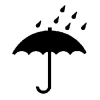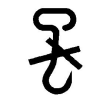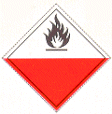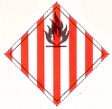| Raffia | [German version] |
Table of contents |
|
| General: | ||
| Product information | ||
| Packaging | ||
| Transport | ||
| Container transport | ||
| Cargo securing | ||
Product information
Product name
| German | Raffia, Raphia, Raphiabast |
| English | Raffia |
| French | Raphia |
| Spanish | Raffia |
| Scientific | Raphia ruffis, Raphia farinifera |
| CN/HS number * | 5305 9 ff. |
(* EU Combined Nomenclature/Harmonized System)
Product description
Raffia belongs to the category fibers/fibrous materials, which are classified as follows [24]:
Plant hairs:
| Cotton seed-hairs | |
| Kapok tree fruit hairs |
Stalk fibers from dicotyledonous plants (soft fibers):
| Flax, ramie (fine spinnable fibers) | |
| Hemp, jute, kenaf (coarse spinnable fibers) |
Leaf fibers (hard fibers):
| Sisal, Manila hemp, palm fibers (poor spinning characteristics) |
Bast:
| Linden, raffia palm, willow |
Basketwork material:
| Coconut fiber, rattan cane, halfa, piassava, esparto |
Like chair cane and piassava, raffia is a palm fiber (= leaf or leaf rib fiber from tropical palm varieties (Palmae)) and should not be confused with the palm-type fibers such as yucca and aloe, which come from the Liliaceae family. Raffia is also sold under the name raffia bast.
The raffia palm (Raphia farinifera) was originally native to Madagascar; however, stocks there have been decimated by over-exploitation. This palm is now cultivated in West and East Africa.
Raffia palms are up to 20 m high, the palm crowns carrying pinnate leaves up to 15 m long and up to 3 m wide. The young, as yet unopened leaves are covered with the raffia bast, which is removed, dried and packaged in bales.
Raffia fibers have very good strength and stretch. They are 1.5 – 1.8 m long and 0.04 m wide.
Quality / Duration of storage
Raffia from the west coast of Africa is lighter than that from the east coast.
Moisture-damaged goods must be rejected prior to loading, as the resultant mustiness, mold and rot may cause considerable depreciation.
Subject to compliance with the appropriate temperature and humidity/moisture conditions, duration of storage is not a limiting factor as regards transport and storage life.
Intended use
Raffia is principally used as a binding and basketwork material in garden and fruit cultivation as well as for weaving (mats, rugs, baskets, hats, coarse yarns for craft items).
Figure
(Click on the individual Figures to enlarge them.)
 Figure 1 |
 Figure 2 |
Countries of origin
This Table shows only a selection of the most important countries of origin and should not be thought of as exhaustive.
| Europe | |
| Africa | Madagascar, South Africa, West and East Africa |
| Asia | |
| America | |
| Australia |
Back to beginning
Packaging
Raffia is transported in 100 kg bales wrapped in bast mats.
| Marking of packages | ||
 Keep dry |
 Use no hooks |
 Keep away from heat (solar radiation) |
Back to beginning
Transport
Symbols
 Spontaneously combustible, Class 4.2 IMDG Code |
 Fire hazard (Flammable solids), Class 4.1 IMDG Code |
 General cargo |
Means of transport
Ship, truck, railroad
Container transport
Standard containers , subject to compliance with water content of goods, packaging and flooring.
Cargo handling
In damp weather (rain, snow), the cargo must be protected from moisture, since raffia is strongly hygroscopic and readily absorbs moisture. This may lead to discoloration and fungal attack.
Do not use hooks for cargo handling, since they may lead to sparking when they come into contact with metal objects.
In addition, smoking is absolutely prohibited during cargo handling.
Stowage factor
| 2.97 – 3.26 m3/t (bales, Madagascar) [1] | |
| 4.81 – 6.20 m3/t (bales, South Africa, uncompressed)[1] | |
| 3.54 m3/t (bales, South Africa, compressed) [1] | |
| 3.11 – 3.26 m3/t (bundles) [14] |
Stowage space requirements
Cool, dry
Segregation
Fiber rope, thin fiber nets
Cargo securing
The cargo is to be secured in such a way that the bales or strapping are not damaged. Undamaged strapping is essential to maintain compression of the bales during transport. If the strapping is broken, compression is diminished, which at the same time results in an increased supply of oxygen to the inside of the bales. This in turn increases the risk of combustion or feeds a fire which has already started.
Back to beginning
Risk factors and loss prevention
RF Temperature
Raffia requires particular temperature, humidity/moisture and possibly ventilation conditions (SC VI) (storage climate conditions).
Favorable travel temperature range: no lower limit – 25°C
Raffia must be stowed away from heat sources.
Every hold should be equipped with means for measuring temperature. Measurements must be performed and recorded daily.
Back to beginning
RF Humidity/Moisture
Raffia requires particular temperature, humidity/moisture and possibly ventilation conditions (SC VI) (storage climate conditions).
| Designation | Humidity/water content | Source |
| Relative humidity | 65% | [1] |
| Water content | 12% | [1] |
| 12.0% | [14] | |
| Maximum equilibrium moisture content | 65% | [1] |
Raffia behaves strongly hygroscopically (hygroscopicity). It must be protected from sea, rain and condensation water and also from high levels of relative humidity, as otherwise the resultant mustiness, rot and mold may cause depreciation.
Back to beginning
RF Ventilation
Raffia requires particular temperature, humidity/moisture and possibly ventilation conditions (SC VI) (storage climate conditions).
If the product is loaded for shipment in a dry state, it does not have any particular ventilation requirements.
Problems arise if the product, packaging and/or ceiling/flooring are too damp. In this case, the following ventilation measures should be implemented:
Air exchange rate: 10 changes/hour (airing)
Since raffia very readily absorbs oxygen, before anybody enters the hold, it must be ventilated and a gas measurement carried out if necessary, since a shortage of oxygen may endanger life.
Back to beginning
RF Biotic activity
Raffia displays 3rd order biotic activity.
It belongs to the class of goods in which respiration processes are suspended, but in which biochemical, microbial and other decomposition processes still proceed.
Back to beginning
RF Gases
Raffia very readily absorbs oxygen. An oxygen shortage may therefore arise in closed holds and containers. Before anybody enters such holds, the holds must be ventilated and a gas measurement carried out where necessary.
The increase in CO2 and CO content indicates a cargo fire. The TLV of the hold air is 0.49 vol.%.
Back to beginning
RF Self-heating / Spontaneous combustion
Raffia is assigned to Class 4.1 of the IMDG Code (Flammable solids). However, its specific characteristics and negative external influences (see below) may cause it to behave like a substance from Class 4.2 (Substances liable to spontaneous combustion) of the IMDG Code or ADR.
Its high cellulose content makes raffia particularly liable to catch fire through external ignition (heating). Therefore, it must always be protected from sparks, fire, naked lights and lit cigarettes. Smoking is absolutely prohibited. In accordance with the IMDG Code, ventilation openings leading into the hold should be provided with spark-proof wire cloth.
Raffia must be stowed away from animal and vegetable fats/oils, oil-bearing seeds/fruits, copra and raw wool, since oil-impregnated fibers promote cargo fire.
Fire-fighting is best performed using CO2 or foam.
Back to beginning
RF Odor
| Active behavior | Raffia is neutral in odor. |
| Passive behavior | Raffia is sensitive to unpleasant or pungent odors. Foreign odors produced by highly odor-tainting goods may cause depreciation. |
Back to beginning
RF Contamination
| Active behavior | Raffia does not cause contamination. |
| Passive behavior | Raffia is sensitive to contamination by dust, dirt, fats/oils and rust as well as oil-containing goods, such as oil-bearing seeds/fruits, copra, raw wool etc., since oil-impregnated fibers promote self-heating/cargo fire. Holds or containers must accordingly be clean and in a thoroughly hygienic condition. Residues from previous cargoes, such as ores, stones, coal, metal filings, fertilizers etc., result in losses. |
Back to beginning
RF Mechanical influences
Care must be taken to ensure that mechanical influences do not cause damage to strapping.
Back to beginning
RF Toxicity / Hazards to health
Since raffia is highly oxygen-absorbent, a life-threatening shortage of oxygen may arise in the hold or container. Thus, before anybody enters the hold, it must be ventilated and, if necessary, a gas measurement carried out. The TLV for CO2 concentration is 0.49 vol.%.
Back to beginning
RF Shrinkage/Shortage
Unclearly marked bales may result in losses of volume due to incorrect delivery.
Back to beginning
RF Insect infestation / Diseases
No risk.
Back to beginning
